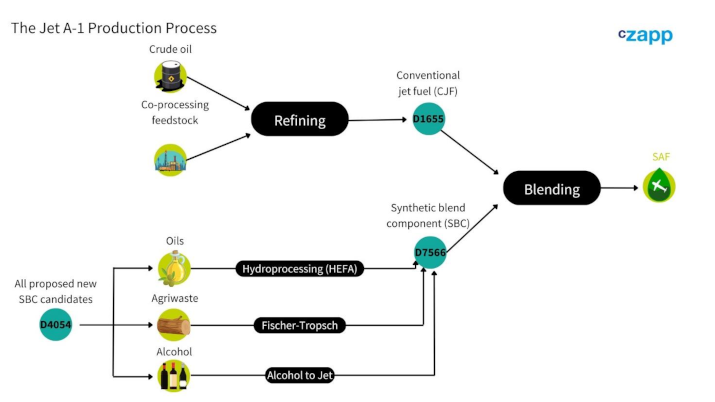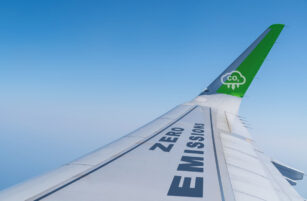Insight Focus
- When creating SAF, it is important that the process is standardised.
- This helps ensure safety and mitigates the risk of extraneous ingredients being added.
- These specifications also extend to the production process.
The Specs of Jet Fuel and SAF
Outside the US, the most commonly used jet fuel for commercial aviation is Jet A-1. To ensure it works as it should (which is rather important when travelling at 35,000 feet), it’s produced to international specifications to ensure safety and consistency.
Jet fuel can be produced in a number of ways depending on the crude oil source, configuration of the oil refinery and the manufacturing process. Happily, aircraft turbine engines can operate with fuels with a wide range of properties.
Jet fuel is therefore defined by its technical performance rather than its exact chemical composition. For example, a major consideration is ensuring a minimum flash point (38oC) for safety, and a maximum freeze point (-47oC) for cold flow performance and be free of water to avoid ice formation at high altitudes.
For SAF, while the manufacturing process changes, the final product, Jet A-1, remains pretty much unchanged. While there may be small variations in key properties, they will remain within the limits set by the same specification.
This simplifies things, and simplicity is the hand maiden of safety. If the fuel doesn’t change in terms of composition and performance, then we can call it a ‘drop-in’ solution and the impact of the change on aircraft performance is negligible.
The ultimate goal is to ensure that the jet fuel in the aircraft is on-specification, and this philosophy extends to the incorporation of new manufacturing processes. The fuel produced must meet the requirements of the specification in terms of composition and performance.
Creating a Drop in Solution
How do we create a drop-in solution? Cautiously. There are barriers in place to make sure that contaminants (including incidental materials or stuff that shouldn’t be there) don’t make it into the final product and that the performance of the fuel isn’t materially changed.
While this may seem a cumbersome process, it has the advantage of safety, which prevents the inadvertent inclusion of a component that knocks the jet fuel off-specification, or means it is otherwise not fit for purpose.
The guiding document is the fuel specification, which governs the processes and test requirements to make Jet A-1, and any changes in the manufacturing process must recognise this challenge.
For SAF, control has been achieved by creating another specification that controls the admission of new components, and a further specification that permits the process and component. In this way we minimise any risks of introducing contaminants or producing a fuel which is not fit for purpose.
So, Jet A-1 (and Jet A in the US!) is now manufactured in a number of ways.

The commercial jet fuel component begins with crude oil that is distilled, hydrogenated and additivated. The synthetic blend component can start off in a number of ways, including:
- as a vegetable, animal or waste oil feedstock that is hydrogenated and cracked (lightened to get it in the kerosene boiling range) then additivated;
- as any number of sundry carbonaceous materials such as waste plastic, coal or natural gas. These are then gasified to produce ‘syngas’ which is then run over a catalyst and treated to produce SBC; or
- as ethanol from the fermentation of various carbohydrates, which is then dehydrated and oligomerised and cracked to produce SBC.
Other processes are derivatives of the above, including the power to liquid (PTL) process, which begins with CO2 and hydrogen as feedstock gasses.
What is SAF?
A sustainable aviation fuel is one that is produced using carbon contained within a carbon cycle. In other words, where the carbon emitted in the fuel combustion first came from carbon in the atmosphere, crops or waste. This means that, in the life cycle of the fuel, less net carbon, as carbon dioxide, is emitted.
In our next articles we’ll look at the permitted pathways to a synthetic blend component and subsequently to SAF.













